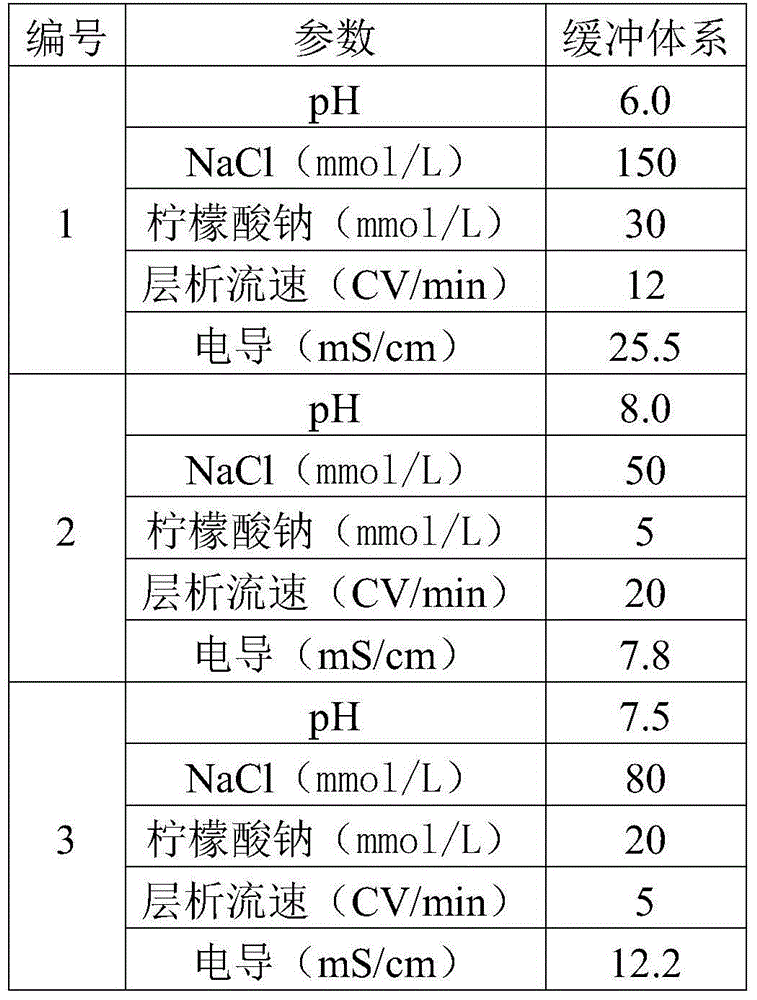Method for removing nucleic acid from protein products
A protein product and nucleic acid technology, which is applied in the preparation methods of peptides, immunoglobulins, chemical instruments and methods, etc., can solve problems such as difficulty in meeting the needs of antibody drugs, and achieve good clinical application prospects, simple processing methods, and safety. Good results
- Summary
- Abstract
- Description
- Claims
- Application Information
AI Technical Summary
Problems solved by technology
Method used
Image
Examples
Embodiment 1
[0019] Embodiment 1 Nucleic acid removal method of the present invention
[0020] 1. Test material
[0021] Antibody protein sample acquisition:
[0022] Step 1. Preparation of a CHO cell capable of expressing an anti-CD20 monoclonal antibody:
[0023] Preparation of CHO cells expressing anti-CD20 monoclonal antibody: The dhfr (dihydrofolate reductase) expression unit in the pSV2-dhfr vector (ATCC product) was cloned into the pCDNA3.1 (+) vector (Invitrogen Company product), the mammalian cell expression vector pBF01 capable of expressing DHFR was constructed.
[0024] According to literature reports (US Patent, US6399061), the light chain and heavy chain gene fragments of the recombinant anti-CD20 monoclonal antibody were synthesized by chemical synthesis technology; the synthetic gene fragments were respectively cloned into pBF01 vector by DNA recombination technology, and express The recombinant expression vectors pBF01-CD20L and pBF01-CD20H of the light chain and heavy ...
Embodiment 2
[0055] Embodiment 2 Nucleic acid removal method of the present invention
[0056] 1. Test material
[0057] With embodiment 1.
[0058] 2. Nucleic acid removal method of the present invention
[0059] Except that the balance solution was changed to the balance solution in Table 1 below, the other conditions were the same as in Example 1.
[0060] Table 1 Changes in Balance Solution
[0061]
[0062] 3. Detection and analysis
[0063]With embodiment 1.
[0064] 4. Experimental results
[0065] Table 2 Test results
[0066] Numbering
Original nucleic acid content
Nucleic acid content after purification
Antibody yield or purity of the sample after the method of the present invention is processed
1
8.5pg / mg protein
Less than 0.1pg / mg protein
Protein purity 97%, yield 98%
2
2.7pg / mg protein
Less than 0.1pg / mg protein
Protein purity 96%, yield 99%
3
3.9pg / mg protein
Less than 0.1pg / mg protein
Pro...
PUM
| Property | Measurement | Unit |
|---|---|---|
| Conductivity | aaaaa | aaaaa |
Abstract
Description
Claims
Application Information
 Login to View More
Login to View More - R&D
- Intellectual Property
- Life Sciences
- Materials
- Tech Scout
- Unparalleled Data Quality
- Higher Quality Content
- 60% Fewer Hallucinations
Browse by: Latest US Patents, China's latest patents, Technical Efficacy Thesaurus, Application Domain, Technology Topic, Popular Technical Reports.
© 2025 PatSnap. All rights reserved.Legal|Privacy policy|Modern Slavery Act Transparency Statement|Sitemap|About US| Contact US: help@patsnap.com

